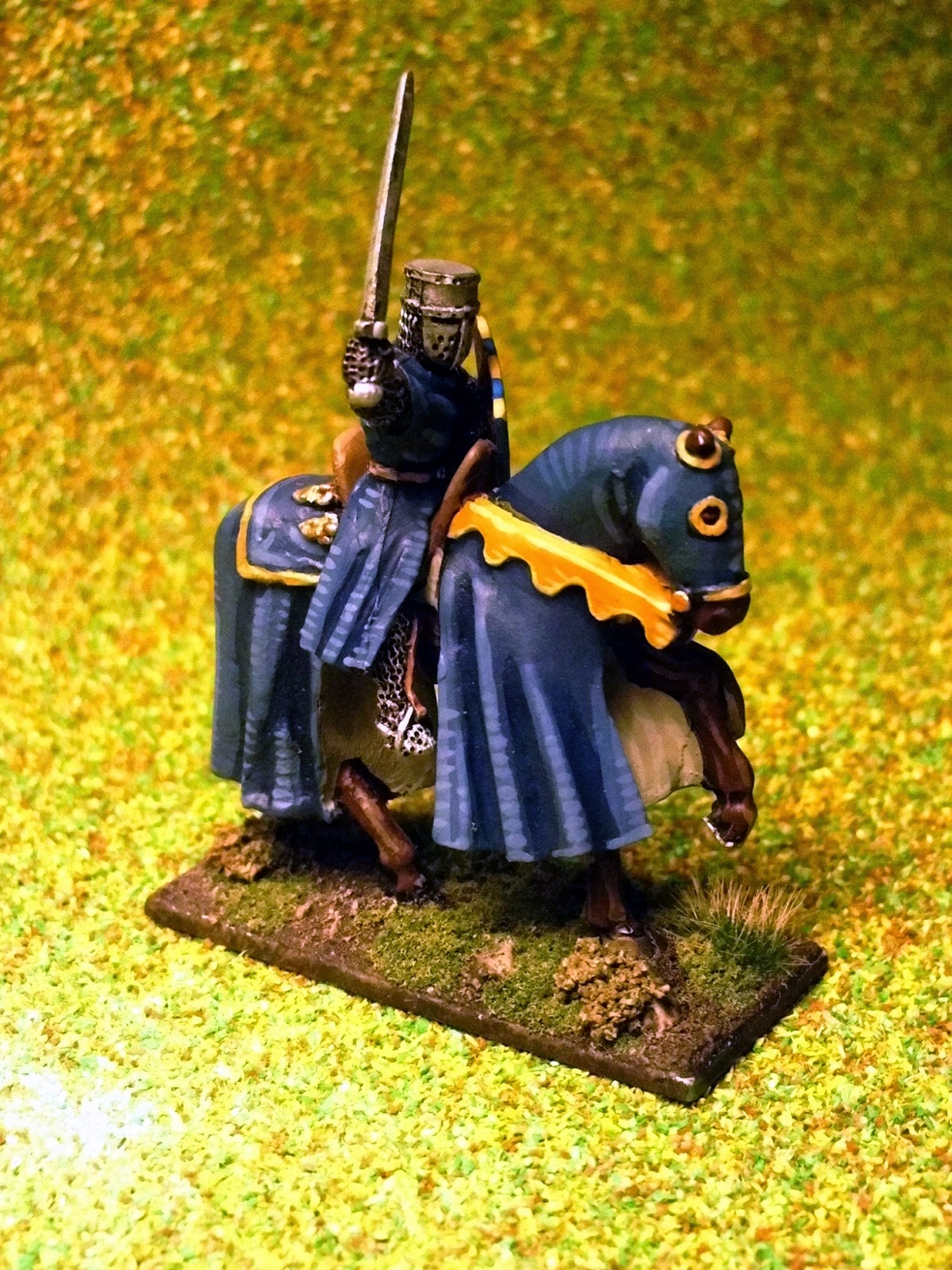This piece of terrain can be used on the table top for ancients right up to the modern day (OK, it would have to be somewhere quite unsophisticated but the principle remains).
The base is made from a small off cut piece of MDF board from work; barbecue sticks make up the corner posts and the smaller posts in between are the ever useful cocktail sticks. This size and shape of the board isn't very important with this method so any piece of cast off material can be used to form the base. Cutting a cocktail stick into two equal halves will establish the overall height of the fence which seems to suit all of the 28mm size animals I have, such as the two porkers previously shown
(here)
Mark straight lines on to the board approx 10mm (or 1/2" which is 12.7mm and close enough) which will determine the line of the fence, then equally divide this line to the spacing of the uprights. Again I used approximately a 10mm spacing which seemed to work out OK and gave a realistic enough look to the final model.
Next holes were drilled holes suitable to hold the various size uprights sticks in place. You can quite easily use the same size stick for all the uprights (although I previously found that corner cocktail sticks used in a corner tended to bend inwards under the pressure of the 'wattle').
Remember to leave a gap for the gateway.
Once the board and sticks have dried in position now comes the tricky bit, using plant/garden twist tie (available from any garden centre or even any decent supermarket nowadays) and starting from one corner weave the twist tie thought the uprights. Once you completed a circuit (remembering to leave a gap for the gate) return in the opposite direction and weave the twist tie through the uprights so the is now on the opposite side of the stick - hopefully the technique makes more sense when you look at the photos rather than me trying to describe the process.
As you weave the twist tie around the uprights you will have to push the tie down into position as it does tend to 'ride up' in places. Once happy with the number of horizontal passes I then painted the whole assembly with PVA glue to secure everything into place.
The gateway is simply made from more cocktail sticks and coffee stirrers and secured into position with twisted copper wire to give the impression of rope.
Obviously exactly the same technique can be used to create single wattle fences.
Very nice (and cheap) plastic wattle fences in two fixed lengths are available to buy from Renedra Ltd. However using the method described above you can make any size and shape enclosed area you wish. It might make a while to make but it is always very satisfying to make you own terrain.































